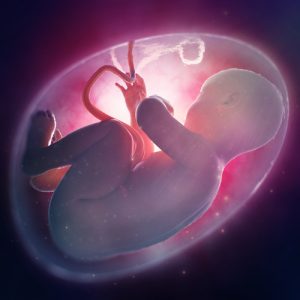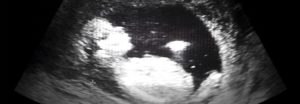
As any new parent can attest, there’s no doubt that a newborn baby is fully capable of crying, but is this a whole new experience for them or does the crying phase begin in the womb? It’s a question many expectant mothers ponder as they feel their developing baby move and kick inside the womb.
In short, the simple answer is yes. The subtle benefit is that, thanks to fetal growth and the womb environment, you can’t hear these faint infant cries until delivery. So, without vocalization, scientists are able to measure other elements and actions to determine that this action is taking place.
Research of Fetal Crying
When it comes to researching and documenting fetal crying, scientists and doctors have discovered evidence that this action of crying does in fact take place during gestation. In fact, a video published by the Archives of Disease in Childhood showed a 33-week-old fetus making facial expressions that appeared like crying. The information revealed the fetus opened its jaw wide, moved its lower lips, and exhaled as the chest rose. It is a movement noticed in about 6 percent of the total number of children scanned during ultrasounds and prenatal screenings.
Another New Zealand research provided video evidence of a baby crying in the womb. Researchers were able to narrow down the video into multiple steps, of a series of movements and breathing, to prove that the baby was indeed crying. The research concluded that babies could begin crying in the womb by week 24.
Understanding Why Babies Cry in the Womb
 Many mothers may cringe at the thought of their baby crying inside their womb and be concerned of the cause for this activity. Is it because of pain? Is the baby sad? Rest assured, researchers have reached a theory that this crying done by the growing fetuses is not due to pain or sadness. According to research, it is believed that, instead, babies are merely practicing their means of communication.
Many mothers may cringe at the thought of their baby crying inside their womb and be concerned of the cause for this activity. Is it because of pain? Is the baby sad? Rest assured, researchers have reached a theory that this crying done by the growing fetuses is not due to pain or sadness. According to research, it is believed that, instead, babies are merely practicing their means of communication.
Not only is this crying a bit of practicing on baby’s part, it also serves as a good sign for doctors if documented, as they can ascertain that the baby can react to stimuli in several ways and potentially recognize outside stimuli. This action can also indicate that baby’s growth is on track and adequate improvement in breathing techniques is taking place.
Rather than worry about crying taking place, think of it as a crying dress rehearsal for when the time comes that baby is ready to wail for your attention once they are born.
Additional Actions Baby is Taking
Aside from crying, research by five states of fetal activity shows that fetuses can also show a number of other behaviors similar to newborns. Not only does research show that developing babies can respond to sound around 27 weeks’ gestation, but additional activities as well.
These include quiet and active awake time, quiet sleep time, and participating in an active state. Studies by fetal psychology showed other activities that fetus’ can do include swallowing, yawning and licking.
Scientists believe that babies may dream while in the state of sleep in the womb as well. While they may not be dreaming of teddy bears and trips to the jungle gym just yet, researchers believe they are more likely to dream about sensations they may feel in their mother’s belly.
From these reactions to external stimuli to practicing crying, there’s no doubt that pregnancy is full of fascinating changes as your baby develops over the course of 40 weeks.


